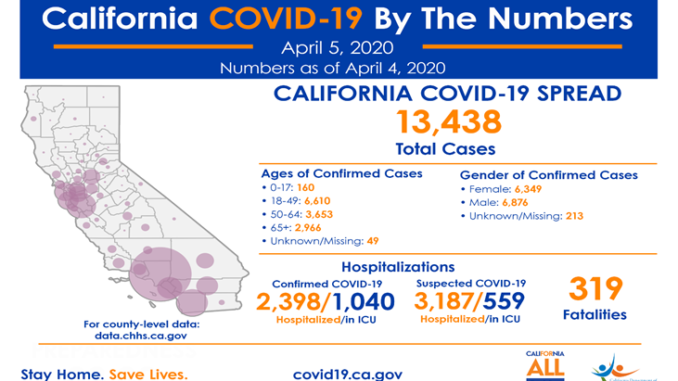
S. E. Williams | Contributor
The California Department of Public Health’s (CDPH) website displays an informative graphic titled “COVID-19 by the Numbers.”
This graphic updates the status of COVID-19 cases in California as it spreads throughout the state, highlighting important details about the status of its impact (including total number of confirmed cases statewide). The information is further divided into categories which include age, gender hospitalizations, and fatalities. There is, however, one missing component—a breakdown by race.
Yet, such information is critical and would certainly be useful to leaders of the state’s African American communities — including elected officials, religious leaders and others working in such communities considered among the groups most at risk of contracting the most-deadly form of the coronavirus, COVID-19.
Recently, California Senator Kamala Harris joined U.S. Senator Elizabeth Warren, Congressional Representative Ayanna Pressley – both from Massachusetts—and others in sending a letter to the U.S. Department of Health and Human Services Secretary, Alex Azar, calling for comprehensive demographic data on people who have tested and/or are being treated for the COVID-19 virus.
“Any attempt to contain COVID-19 in the United States will have to address its potential spread in low-income communities of color, first and foremost, to protect the lives of people in those communities, but also to slow the spread of the virus in the country as a whole,” they wrote.
Today, Black communities across the nation, including California, are experiencing the reality of those vulnerabilities as the number of COVID-19 cases and deaths continue to mount among Blacks.
The IE Voice/Black Voice News reached out to the CDPH and inquired about its failure to include demographic details in its “COVID-19 By the Numbers” posting, why the information was not included and where within the agency such information can be accessed?
In response the agency stated, “We are working as quickly as possible to provide additional data. The information we have currently posted on the CDPH webpage and this data portal is what we have available at this time ( this data is updated daily).”
Neither of the links provided in the department’s response include demographic information. CDPH did, however, offer, “The information you requested may be made available in the future.”
The Senators and Representatives further urged Azar to direct sub-agencies of HHS including the Centers for Disease Control and Prevention (CDC) and the Food and Drug Administration (FDA), to work with municipalities, states and private labs across the country to ensure racial and ethnic data are being collected.
Their push for transparency of data comes as Black communities from New York and Chicago to Detroit and New Orleans are reeling from the impact of this deadly virus. In Chicago, it has been reported that more than half of the city’s coronavirus cases are African-Americans and they account for over 70% of the deaths due to the deadly virus.
“This lack of information will exacerbate existing health disparities and result in the loss of lives in vulnerable communities,” the Senators and Representatives argue.
Community News, Health
As COVID-19 Slams into Black Communities Many Question: Where’s the Data?

Be the first to comment